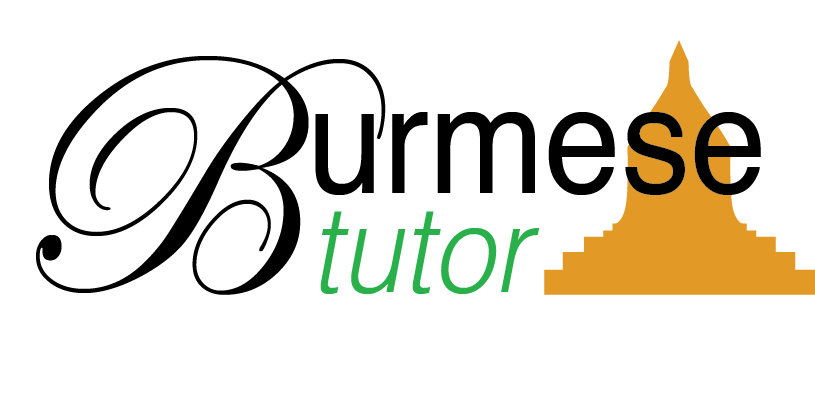Did You Know…? 5 Fun Facts About the Burmese Language
Burmese is a language spoken in the country of Myanmar, a Southeast Asian nation with a population of approximately 53 million people and home to 135 different ethnic groups. The largest ethnic group in Myanmar is the Bamar, who were the original native speakers of Burmese. Now, Burmese is often called “Myanmar” because it is shared as a common language by the majority population of the country of Myanmar.
Here are some fun facts you probably didn’t know about the Myanmar language!

1. Burmese doesn’t have any close major language relatives
Most people reading this article are probably familiar with the concept of language relatives, but just in case you’re not, here’s a brief description: English is closely related to German because it’s a Germanic language, and Spanish and French are close because they’re both Romance languages. The same is true when it comes to Arabic and Amharic (both Semitic languages) or Hindi and Nepali (both Indo-Aryan languages).
But what about Burmese?
The Myanmar language is a member of the Sino-Tibetan language family, but even while it’s distantly related to Tibetan and Chinese languages, there’s no other living language that shares close ties to Burmese. To get even more specific, Burmese is a Burmish language, and some experts may argue that Arakanese, Achang, Lao Vo, or Zaiwa (to name a few) are actually separate languages from Burmese. But, other individuals may say that they’re simply distinct dialects of Burmese. So therefore, Burmese doesn’t have any major close language relatives that are spoken today!
2. Burmese is a tonal language
That’s right! Just like a lot of the language spoken surrounding Myanmar, like Cantonese, Thai, and Vietnamese, Burmese is a tonal language that requires a very careful ear and tongue to be able to speak and understand it correctly. The consensus is that Burmese has three tones, known as “high”, “low”, and “creaky” tones (some other people say that Burmese has four, or even five tones, but here at BurmeseTutor.com, we agree that the language has 3 distinct tones that are used in everyday speech).
The tones of Burmese means that, depending on the way that you say a word, the meaning can change. So if you say “saaaaa” instead of “sa.”, in Burmese you’ll be saying “eat” and “begin” (respectively)! Starting early on the tones is crucial if you want to become proficient in Burmese. So, since tones are so important, I make sure to work carefully with all my students to ensure that they’re pronouncing words properly and that they fully understand the tone system from the beginning.
3. Burmese is a monosyllabic language
What does that mean, “monosyllabic?” If you’re confused, don’t worry, I’ll explain.
English is a multisyllabic language, meaning that English words are composed of multiple syllables. In contrast, Burmese is monosyllabic, so that means that all Burmese words are composed of a single syllable such as “ka” or “se”. In the Myanmar language, speakers string together combinations of monosyllabic words to create various words, phrases, and nuanced meanings. And if you think this sounds much simpler than English, think again! Although the Burmese characteristic of being monosyllabic is good in some ways, it can get confusing to our western multisyllabic brains.
But that doesn’t mean you can’t master this monosyllabic language. There are plenty of tools and techniques to use to help you remember words and understand other people when you’re using your Myanmar language skills!
4. The modern Burmese language originated in the cultural capital of Bagan (also known as Pagan)
Some of the earliest known examples of modern Burmese writing show up in artifacts from the Bagan period in Myanmar history. In fact, Burmese came from the Pyu people, who ruled before the kings of Bagan and were speakers of an even older Tibeto-Burman language that greatly influenced modern Burmese. The Pyu language shows up in Myanmar as early as the 5th century, and the many years of rich cultural and linguistic Pyu tradition contributes to modern day Burmese culture as we know it.
5. The Burmese script is distinctive and steeped in culture
The modern Burmese script is thought to have originated from early Brahmic scripts (which fathered languages like Sanskrit), but even well-versed experts aren’t clear on the exact development of the Myanmar script. Certainly, it’s very unique. Every letter in the Myanmar language’s 26-letter alphabet is accompanied by a consonant, making it an abugida style script. Thus, instead of simply having “k”, you have “ka”.
Burmese is written using the Burmese script, but so is Pali, an ancient historical language that is now used exclusively for religious purposes in reciting monastic verses throughout Myanmar (and beyond). A few other languages/dialects also use the Burmese script, but for the most part, the use of this alphabet is limited exclusively to Myanmar and a few small regions just beyond her borders.
Burmese is a beautiful, unique language with many layers of cultural and historical information. No matter why you’re interested in learning Burmese, you’ve made a good choice! Although the official language of Myanmar is spoken only by a limited group of people, the comparative isolation of Burmese makes it one of the most interesting languages to learn in the world.
BurmeseTutor.com can help you achieve all your language learning goals in a timely, efficient manner. If you’re looking for online Burmese classes, look no further! BurmeseTutor works with students of all levels of all backgrounds and learning styles. Schedule your first lesson today to get started learning the Myanmar language!
